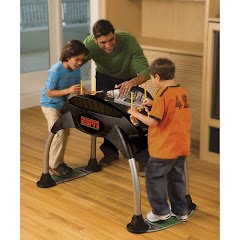Before going shopping for what would be a good present for Joanna, a nine year old girl from North West New Jersey, my expectations were for my searches to lead me towards the obvious dolls such as Barbie but also towards some other popular games that could be intended for both boys and girls। I was surprised by how my searches, the product’s advertisements, the color of products, and my own personal judgments narrowed down my choices as a result of gender expectations.
Through the expected views of advertisers, messages are being sent to children about what toys they are supposed to be playing with and how those toys should shape their lives। ToysRus।com and KBtoys.com both have search settings to shop for toys for boys or shop for toys for girls; the girl toys were filled with dolls, including every single Barbie product, make-up and dress sets, and everything else that were pink or purple and boy toys were filled with machines, action figures, and sport related games. What distinguishes a girl’s doll from an action figure or a boy’s doll is the qualities that it should bring out in the child playing with it. When I separated the dolls for both boys and girls from the dolls intended just for girls on the website, I found a common theme of girl’s dolls needing more nurturing and consisting of all the dolls that had certain images about them such as Barbie and Bratz brands which have perfect bodies, faces, and fashion, whereas the both category (for boys and girls) of dolls consisted of simply stuffed animals and limited female dolls in which some even had a picture of a girl playing with that doll. Dolls intended for girls send messages to girls that they should be nurturing because of the amount of baby dolls on the market for them and they also give girls the false belief of perfect women through the “perfect” and desirable qualities of Barbie and Bratz. Dolls intended for boys send messages that they should be powerful, ruthless, and a leader because of the amount of hero action figures, machines, and animals on the market for them.
Along with the advertising, the consumers are just as guilty for allowing toys to represent powerful methods of information dissemination to children। Hall would argue that our society’s ideologies, “which help us represent, interpret, and understand some aspects of our social lives” cause us to choose the toys we buy, give as presents, and play with (89). Even when I was shopping for the nine year old, Joanna, I realized that I was allowing my own ideas and judgments to narrow down what toys should be for girls and boys. Just as many other people in my society, I thought to myself that certain toys would not be appropriate to give to a specific gender such as Barbie to a boy or a transformer to a girl. I am hesitant to buy Joanna a transformer or a G.I. Joe because of the normative gender roles and stereotypes in childhood. These stereotypes characterize boys and girls in our society because of the persuasive power toys have upon children in giving them life long characteristics. The belief that giving a G.I. Joe to a girl will make her too masculine in the future or that a Barbie could make a boy feminine or even gay holds strong in our society and toys are not being seen as the innocent products that they may be. Ijeoma A. claims that “everything in her childhood substantiated the need for women to submit” and this truth can be seen in the way toys are marketed and used in our society because they force women to be a certain way and have certain desires which differ from men (217)
Barbie and Bratz are among the top brands seen when searching for a toy for a young girl and these toys range from ages three and up। As Gilman has argued, these dolls pressure many little girls and even adults to meet the standards of what they represent such as their beauty, height, eye and hair color, and nationality, and “if you don’t look like Barbie, you don’t fit in” (73). Three years old is very young for a little girl to begin feeling pressured to meet society’s needs and with these values being instilled upon children at such a young age, they undoubtedly effect aspects of their adulthood exemplifying how dolls shape the character of women as well as other toys shaping the character of many men.
Although there are some gender-neutral games on the market such as some video game systems, learning games, and board games, most toys contain many messages about gender roles because of our own stereotypes of childhood. Should I give in to these gendered toys and buy Joanna a toy specifically marketed towards girls? The normative toys develop the normative child into the normative adult seems to be the ideology of our society allowing toys to have a tremendous impact in gender roles.
References:
A., Ijeoma. “Because You’re a Girl.” ColonizeThis! Young women of color on today’s feminism. Ed. Hernandez, D. & Rehman, B. Seal Press, 2002. 215-229
Gilman, Susan J. “Klaus Barbie, and Other Dolls I’d like to see” Learning Gender. 72-75
Hall, Stuart. “The Whites of Their Eyes.” Gender, Race, and Class in Media. Ed. Dines, G. & Humez, J. Sage Publications, 2003. 89-94.
Toysrus.com and KBtoys.com






